Conformational buffering underlies functional selection in intrinsically disordered protein regions
- PMID: 35948766
- PMCID: PMC10262780
- DOI: 10.1038/s41594-022-00811-w
Conformational buffering underlies functional selection in intrinsically disordered protein regions
Abstract
Many disordered proteins conserve essential functions in the face of extensive sequence variation, making it challenging to identify the mechanisms responsible for functional selection. Here we identify the molecular mechanism of functional selection for the disordered adenovirus early gene 1A (E1A) protein. E1A competes with host factors to bind the retinoblastoma (Rb) protein, subverting cell cycle regulation. We show that two binding motifs tethered by a hypervariable disordered linker drive picomolar affinity Rb binding and host factor displacement. Compensatory changes in amino acid sequence composition and sequence length lead to conservation of optimal tethering across a large family of E1A linkers. We refer to this compensatory mechanism as conformational buffering. We also detect coevolution of the motifs and linker, which can preserve or eliminate the tethering mechanism. Conformational buffering and motif-linker coevolution explain robust functional encoding within hypervariable disordered linkers and could underlie functional selection of many disordered protein regions.
© 2022. The Author(s), under exclusive licence to Springer Nature America, Inc.
Conflict of interest statement
Competing Interests Statement
A.S.H. is a scientific consultant with Dewpoint Therapeutics Inc. and R.V.P. is a member of the scientific advisory board of Dewpoint Therapeutics Inc. This work has not been influenced by the affiliation with Dewpoint. The rest of the authors have no competing interests.
Figures
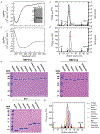
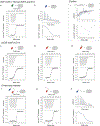
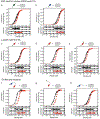
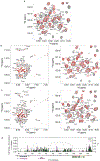
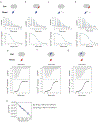
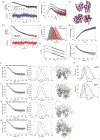
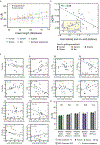
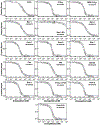
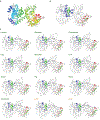
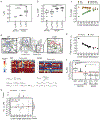





Similar articles
-
Modulation of allostery by protein intrinsic disorder.Nature. 2013 Jun 20;498(7454):390-4. doi: 10.1038/nature12294. Nature. 2013. PMID: 23783631 Free PMC article.
-
Interplay between sequence, structure and linear motifs in the adenovirus E1A hub protein.Virology. 2018 Dec;525:117-131. doi: 10.1016/j.virol.2018.08.012. Epub 2018 Sep 25. Virology. 2018. PMID: 30265888
-
Adenoviral E1A Exploits Flexibility and Disorder to Target Cellular Proteins.Biomolecules. 2020 Nov 11;10(11):1541. doi: 10.3390/biom10111541. Biomolecules. 2020. PMID: 33187345 Free PMC article.
-
Adenovirus-5 E1A: paradox and paradigm.Nat Rev Mol Cell Biol. 2002 Jun;3(6):441-52. doi: 10.1038/nrm827. Nat Rev Mol Cell Biol. 2002. PMID: 12042766 Review.
-
How the Rb tumor suppressor structure and function was revealed by the study of Adenovirus and SV40.Virology. 2009 Feb 20;384(2):274-84. doi: 10.1016/j.virol.2008.12.010. Epub 2009 Jan 17. Virology. 2009. PMID: 19150725 Review.
Cited by
-
The length scale of multivalent interactions is evolutionarily conserved in fungal and vertebrate phase-separating proteins.Genetics. 2022 Jan 4;220(1):iyab184. doi: 10.1093/genetics/iyab184. Genetics. 2022. PMID: 34791214 Free PMC article.
-
Excluded Volume and Weak Interactions in Crowded Solutions Modulate Conformations and RNA Binding of an Intrinsically Disordered Tail.J Phys Chem B. 2023 Jul 6;127(26):5837-5849. doi: 10.1021/acs.jpcb.3c02356. Epub 2023 Jun 22. J Phys Chem B. 2023. PMID: 37348142 Free PMC article.
-
The analytical Flory random coil is a simple-to-use reference model for unfolded and disordered proteins.bioRxiv [Preprint]. 2023 Mar 13:2023.03.12.531990. doi: 10.1101/2023.03.12.531990. bioRxiv. 2023. Update in: J Phys Chem B. 2023 Jun 1;127(21):4746-4760. doi: 10.1021/acs.jpcb.3c01619. PMID: 36993592 Free PMC article. Updated. Preprint.
-
Hierarchy in regulator interactions with distant transcriptional activation domains empowers rheostatic regulation.Protein Sci. 2025 Jun;34(6):e70142. doi: 10.1002/pro.70142. Protein Sci. 2025. PMID: 40371733 Free PMC article.
-
Connecting sequence features within the disordered C-terminal linker of Bacillus subtilis FtsZ to functions and bacterial cell division.Proc Natl Acad Sci U S A. 2022 Oct 18;119(42):e2211178119. doi: 10.1073/pnas.2211178119. Epub 2022 Oct 10. Proc Natl Acad Sci U S A. 2022. PMID: 36215496 Free PMC article.

